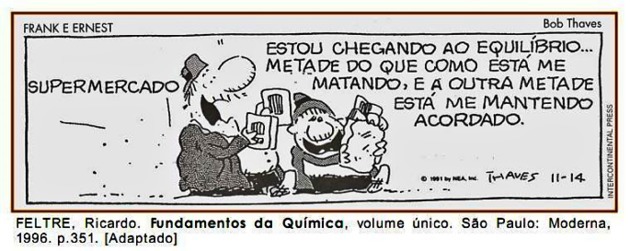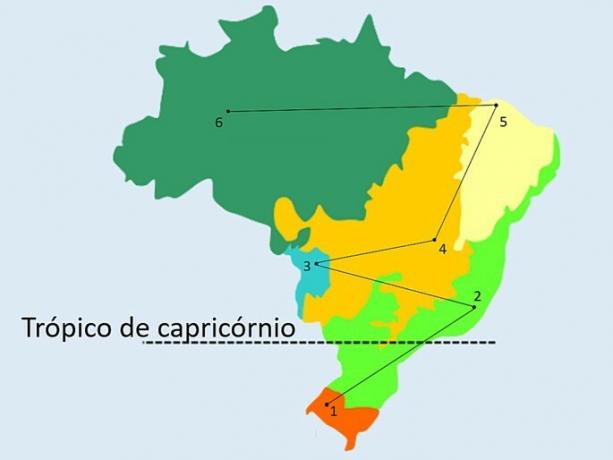Questions about Brazilian indigenous peoples are frequently asked in the main selection processes.
We prepared and selected some questions for you to prepare well for your goal!
01- These are characteristics of the Brazilian indigenous nations before the arrival of the Portuguese in Brazil, except:
They were polytheistic civilizations.
The lands were for collective use among the members of the village, with no idea of private property.
Economy based on hunting and gathering fruits in the forest.
They organized their lives according to the capitalist model.
Their gods were related to phenomena and actions of nature.
Considering that the question wants to know the wrong alternative:
a) WRONG. The Brazilian indigenous peoples worshiped several gods, which characterizes them as polytheists.b) WRONG. The practice of private property was brought to Brazil by the Portuguese.
c) WRONG. Everything that was consumed by Brazilian indigenous people came directly from hunting and gathering in nature.
d) CORRECT. The capitalist model was developed by the European peoples and brought by the European colonizing action.
e) WRONG. The Brazilian indigenous gods were all referring to the phenomena observed by them in nature.
02- Which of the peoples below does not correspond to a Brazilian indigenous nation?
Yanomami.
Tupinambás.
Tupiniquins.
Apaches.
Xavantes.
Considering that the question wants to know the wrong alternative:
a) WRONG. The Yanomami are peoples who live in the Brazilian Amazon rainforest, in the border region with Venezuela.b) WRONG. The Tupinambás were people who inhabited the Brazilian coastal region.
c) WRONG. The Tupiniquin peoples inhabit regions referring to the current state of Espírito Santo.
d) CORRECT. The Apaches are native peoples of the United States.
e) WRONG. The Xavantes are peoples who currently occupy territories in the current state of Mato Grosso.
03- Select the correct alternative regarding Brazilian indigenous peoples.
When the Portuguese arrived in Brazil, the territory was already occupied by millions of inhabitants, called native peoples. The relationship between them and the Europeans was completely peaceful during the years of colonization.
Despite the diversity of indigenous nations living in Brazil today, the characteristics of the different peoples are the same, with no cultural differences between them.
When we talk about indigenous civilizations in Brazil, it is a mistake to think of them only from a point of view of the past, as if these peoples no longer existed. Many of the original nations existing in the period of the arrival of the Portuguese continue to exist in Brazil, maintaining their customs and traditions.
There are no more indigenous people in Brazil. This is because the descendants of the indigenous people, unlike their ancestors, incorporated into their culture various elements from the white man's way of life.
None of the previous.
a) WRONG. Millions of people lived here when the Portuguese arrived, but their relationship was not peaceful during colonization. Enslavement, acculturation and other types of violence were employed by Europeans against native peoples.
b) WRONG. There is great cultural diversity among the different Brazilian indigenous peoples.
c) CORRECT. Several indigenous peoples still reside in Brazil today and maintain their traditions and customs.
d) WRONG. All peoples have cultures that intertwine with others. Saying that these peoples "are more or less indigenous" because they have customs acquired from contact with other cultures is a mistaken view.
e) WRONG. Option C is correct.
04- About the Brazilian indigenous peoples, mark what is correct:
Several customs present in our daily lives come from the culture of Brazilian indigenous peoples, such as such as the idea of private property, sleeping in hammocks and some techniques for burning the fields before planting.
Most of the Brazilian indigenous civilizations had monotheism as a religious practice.
The practice of anthropophagy never existed among Brazilian indigenous peoples.
Many of the Brazilian indigenous civilizations use the sexual division of labor in their daily organization.
The demarcation of indigenous lands has proved unnecessary since the early 2000s, as indigenous peoples no longer have an interest in living on their ancestors' lands.
a) WRONG. The idea of private property did not come from Brazilian indigenous civilizations.
b) WRONG. All indigenous civilizations present in Brazilian territory have polytheism as a religious practice.
c) WRONG. There are reports of anthropophagic practices being practiced by Brazilian indigenous people.
d) CORRECT. Many indigenous civilizations use this model of division of tasks in the daily life of a village.
e) WRONG. The demarcation of indigenous lands has become increasingly necessary, especially considering the interest of loggers and mining companies in these territories. The invasions carried out by these companies have often been accompanied by massacres against the indigenous populations that live there, with the aim of expelling them from the area.
05- (ENEM) TEXT I
Documents from the 16th century sometimes refer to the indigenous inhabitants as “os brasis” or “brasilia people” and, occasionally in the In the 17th century, the term “Brazilian” was applied to them, but references to their economic and legal status were much more popular. Thus, the terms “negro da terra” and “indios” were used more frequently than any other.
SCHWARTZ, S. B. People from the Brazilian land of the nation. Thinking Brazil the construction of a people. In: MOTA, C. G. (Ed.) Incomplete trip to the Brazilian experience (1500-2000). São Paulo Senac, 2000 (adapted)
TEXT II
Indian is a concept built in the process of conquest of America by Europeans. Uninterested in cultural diversity, imbued with strong prejudice towards the other, the individual from other cultures, Spaniards, Portuguese, French and Anglo-Saxons ended up giving the same name to peoples as disparate as the tupinambas and the Aztecs.
SILVA, K. W.; SILVA, m. H. Dictionary of historical concepts, São Paulo: Context, 2005
When comparing the texts, the ways in which the native groups were designated by Europeans during the analyzed period reveal the
idealized conception of the territory, understood as geographically undifferentiated.
current perception of a common ancestry to Amerindian populations.
ethnocentric understanding about the populations of the conquered territories.
direct transposition of the Categories originated in the medieval imaginary.
utopian vision configured from fantasies of wealth.
a) WRONG. The excerpts refer to the way in which Europeans understood the indigenous people and not the territory itself.
b) WRONG. The excerpts do not deal with ancestry.
c) CORRECT. The Portuguese had a view of superiority over the Brazilian indigenous people since the first contacts.
d) WRONG. The excerpts do not address a medieval imaginary.
e) WRONG. A utopian vision is not presented in the quoted passages.
06- (ENEM)
The language they use, all along the coast, lacks three letters; it is convenient to know, there is no F, nor L, nor R in her, something worthy of astonishment, because in that way they have no Faith, nor Law, nor King, and in this way they live disorderly, without having more than this account, nor weight, nor measure.
GANGAVO, P M. The first history of Brazil: history of the province of Santa Cruz which we commonly call Brazil. Rio de Janeiro: Zahar, 2004 (adapted).
The observation of the Portuguese chronicler Pero de Magalhães de Gândavo, in 1576, on the absence of the letters F, L and R in the mentioned language, demonstrates the
simplicity of the social organization of Brazilian tribes.
Portuguese domination imposed on the Indians at the beginning of colonization.
superiority of European society over indigenous society.
misunderstanding of indigenous socio-cultural values by the Portuguese.
difficulty experienced by the Portuguese in learning the native language.
a) WRONG. This excerpt demonstrates a prejudiced view of Europeans regarding the presented indigenous language, and not a simplistic one.
b) WRONG. The excerpt does not represent this domination, but rather a vision of superiority over the original Brazilian peoples.
c) WRONG. There is no European superiority over indigenous culture. This statement represents an erroneous and prejudiced view of the world, based on the Eurocentrism that the Portuguese themselves practiced.
d) CORRECT. Europeans saw themselves as superior to indigenous peoples and based this narrative on the differences between their customs and those of the original peoples.
e) WRONG. The excerpt seeks to criticize the indigenous way of life. It does not represent a difficulty for the Portuguese.


